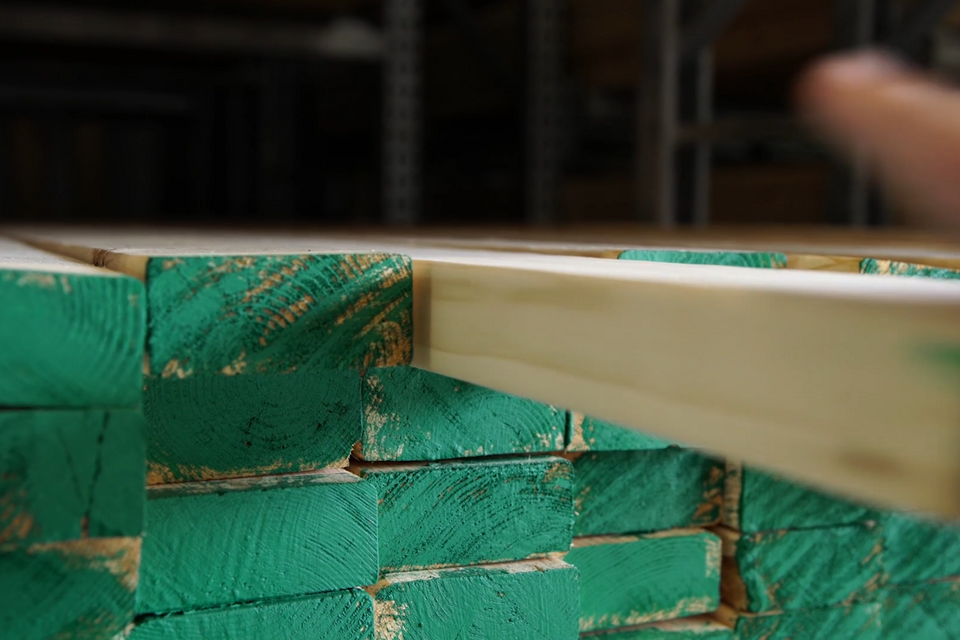At a time which historically has been one of our busiest months of the year for construction, our industry is collectively putting all energy towards surviving, in terms of business and health, as we navigate our way through the COVID-19 pandemic. The business landscape has changed drastically (and oftentimes daily) for suppliers as they react and adhere to their local government’s ordinances for COVID-19 prevention protocol in addition to managing their sales and production amid this crisis. With the sudden reduction in construction across the nation and uncertainty of when sales and operations would return to normal, market prices collapsed. Speculation was abundant as to what signs to follow for a bottom, as the uncertainty led no clear picture of what balance would be realized in terms of supply and demand.
As a reaction to potential closures, suppliers worked double-time to move their orders into customer’s yards (often well in advance of planned delivery dates) and retail customers were busy panic-ordering for their needs, in anticipation of being blocked out of supply due to impending shut-downs. With both sides working toward the middle, dealers found themselves suddenly inundated with inventory and orders, and struggled to find safe storage. After the initial rush and push of orders and shipments, business quieted down, but not to the extent that was fully anticipated as residential construction was surprisingly resilient.
When society is given the green light to lift the most disruptive of COVID-19 restrictions, many in the industry are optimistic that a resurgence will be swift and strong but, that is, for as best as can be anticipated given all the economic and mental disruption that has transpired during this pandemic. How strong that resurgence is will dictate where pricing goes but, as of print, there appears to be ample supply at the retail and distributor levels while mill production is stagnant. As outtake whittles down available supply and as replenishing occurs at the lower mill levels, we anticipate pricing to be flat to down for the near term.
It’s safe to say that very few in our industry would have predicted in the first quarter of 2020, that a pandemic situation would occur and force an abrupt turn to a burgeoning market, but it proves that one can’t take any situation for granted for too long. The disciplines we learn in times like these will make us stronger, healthier, and hopefully more financially sound in the future. As we have seen first-hand with the stark effects a crisis has on the supplies of food, sanitizers, face masks (and certainly toilet paper), we learn that these objects not only represent their inherent value, but also their economic value in terms of what they cost to replace, especially when they become in high demand and scarce. At a time of economic uncertainty, we tend to reduce spending and otherwise become more frugal and efficient, in order to become stronger financially when we know that cash flow may be interrupted.
With that in consideration, what may be lying around as extra stock on the job site is truly money that could be in your pocket. Taking in to consideration the expense of modern building materials, a contractor can literally have thousands of dollars of items on their job that will not be used and it poses a significant risk to cash flow and, ultimately, profitability. Although some may see it as an initial benefit to have extra stock to choose from on the jobsite, it quickly becomes a liability once it’s no longer needed. It takes up valuable working space, can become a theft risk, and is surprisingly susceptible to failure due to weather conditions if not stored properly. Our goal is to deliver to you all that you need to complete the job and, although there is always a waste factor that needs to be considered, reducing how much extra stock you end up with is a critical matter for both of us. If we see lumber as cash, then credit returns are every bit as important as a sale and we acknowledge that.
We can help you with the accuracy of material and quantities you need for your job, as we have a deep bench of sales people who are skilled at estimating as well as a first class Estimating Department, for the bigger projects. In addition to that, we encourage you to talk in depth with your sales person about your job and conditions, and allow us to do quick calculations on your behalf to ensure that you are avoiding overages but getting what you need to finish the job with your initial delivery. In the event that you do have material to return, please be sure to care for it as many building materials have a shelf-life and are very susceptible to sun and moisture damage, otherwise known as “yarding”. If it will be exposed to the elements for any length of time, cover it with a breathable material (ideally a lumber cover, which we can supply to you), store it in a cool, dry location, and elevate it on bunkers, pallets or saw horses. Again, it’s a critical point for both us to reduce the amount of material that is shipped and returned as it loosens up cash flow, provides more space on your job site, significantly reduces man-hours of handling (for both of us), and allows better inventory management. Certainly, we can all appreciate these benefits a little bit more today than pre-pandemic.
As Americans and members of the construction industry, we can be proud of the way that we have all reacted to such a disruptive, chaotic, and unnerving situation as we continue to pull together and support one another in an effort to maintain as much normalcy as possible. Thank you all for your support during these trying times and know that we stand united with you as partners towards rebuilding our post-pandemic world.
